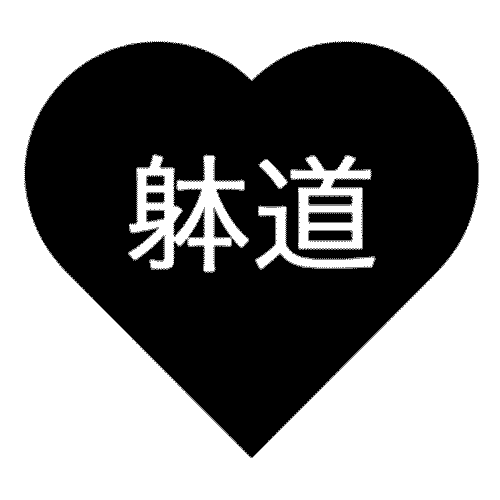Taido's hokei is more than a complex series of techniques. It's the reflection of Taido's principles and philosophy in a physical format. The hokei is a chance for us to express our own interpretations of Taido's theory. The art of hokei lies well beyond the ability to simply perform the designated techniques in sequence and without errors. It's the culmination of physical training and contemplation of Taido's methods in outward expression of each of our personal approaches to Taido.
Rules for Hokei
yooi to hosshin - preparation and starting spirit
Hokei requires the highest focus. Before even beginning, it is important to take a few moments to clear your mind of anything that is not essential to the performance of your hokei. Prepare yourself for battle against the imaginary opponents you will be facing. At this point, reality exists only within the hokei. Foreign stimuli cease to be until after the hokei is over.
in to yo - positive and negative
There must exist a harmony between the positive and negative energy flow in the hokei. When you attack, you exert force on your target; when you defend, you absorb energy from your opponent and environment. Make sure to be aware of the energy passing through your body as you perform the different aspects of the hokei.
kyo to jyaku - amount of power
Power is applied when necessary in striking techniques. You should conserve your power while moving and preparing to execute techniques so that you can deliver strikes with maximum effectiveness to your opponents.
kankyu no doai - amount of speed
There must be harmony and contrast between the speeds at which different parts of the hokei are executed. When moving toward a target or setting up to deliver a strike, you must move very quickly. However, in between techniques, you should move slowly in order to conserve your energy and plan your next step.
shinshuku no doai - amount of stretching
You must stretch to reach your opponent when striking. Push your hips toward the target while maintaining control of your balance. Be careful not to over-stretch. You should be in control of your footwork and distance.
kokyu ho - correct breathing
Each hokei has a designated set of breathing techniques. These techniques are important to the correct execution of each strike and motion in the hokei. Learn to control your breath precisely.
chakugan to mokuhyo - eye contact and target
Always move toward an imaginary opponent. Before each move, make sure to set up your target and turn your head to face the direction you will be pursuing. Any technique delivered without a goal will be obviously ineffective. Be sure to execute each technique with its intended target in mind.
kiai - proper use of kiai
Kiai is necessary in order to focus your energy for techniques in certain parts of the hokei. Be aware of the energy from your center being pushed through your strike in coordination with the air expelled in your kiai. Correct timing of your kiai is important to your technique.
keitai no hoji - correct posture
Posture is the specific relationship between your body and gravity. If your posture (either in kamae or mid-technique) is incorrect, your delivery will be less than effective. You must remain balanced and in control of your posture throughout the hokei in order to maintain control over your motions.
zanshin to kaitai - finishing spirit and reflection
When you have stopped moving, you have still not yet completed your hokei. After you have performed all of the necessary physical techniques, it is time to reflect on your performance. Think about how you can improve your hokei and whether or not you feel you effectively communicated your interpretation of the hokei. Remember these observations for the next time you practice.
Tournament Scoring
Of course, there is more to hokei than just these ten, but all other factors being equal, these rules constitute the formula for judging hokei performance. In competition, points can be added or subtracted for variations in the technique such as substituting more-difficult tengi.
The guidelines for point bonuses and penalties are as follows:
- twisting flip: +0.8
- no-hand cartwheel: +0.4
- front or back flip: +0.4
- one-hand cartwheel: +0.2
- re-do or stop: -3
- sequence error: -2
- out of bounds: -1
- incorrect hand or foot: -0.5
- loss of balance (touching the ground): -0.5
- missing the line or starting point: -0.5
